- Ugochi Acholonu
- http://digitalyouthnetwork.org/staff/ugochi-acholonu/
- Research Scientist
- Broadening Participation in Computing through a Community Approach to Learning
- Digital Youth Network, DePaul University
- Dominic Amato
- DePaul Graduate Student
- Broadening Participation in Computing through a Community Approach to Learning
- Digital Youth Network, DePaul University
- Amy Eshelman
- Partnership Coordinator
- Broadening Participation in Computing through a Community Approach to Learning
- Digital Youth Network, DePaul University
- Nichole Pinkard
- http://digitalyouthnetwork.org/staff/nichole-pinkard/
- Professor and Co-Founder of Digital Youth Network
- Broadening Participation in Computing through a Community Approach to Learning
- Digital Youth Network, DePaul University
Presenters’
Choice
Choice
Public Discussion
Continue the discussion of this presentation on the Multiplex. Go to Multiplex




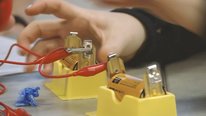
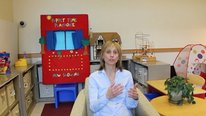

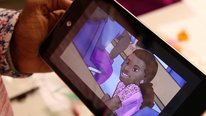
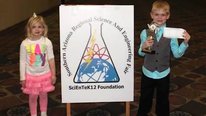
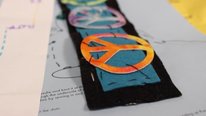
Vivian Guilfoy
Senior Advisor
Your work is very exciting. Taking the technology on the road to make it accessible is very much needed. Can you say more about the population of young people who have taken advantage of the program (e.g. age, demographics, gender, familiarity with technology or games,areas of the city)? Also, can you share any data about how often you visit each of the sites and the “staying power” of the young people in returning to the van sites over time. The enthusiasm of the young people in the video is compelling!
Ugochi Acholonu
Research Scientist
Thanks for your question. We visited the four sites every week for six weeks. We have 70 different students who signed in during the course of the six week. In-terms of demographic, the majority of students who attended were early teens/pre-teens. We do not have the specific race/gender of all students who attended (they were not required to provide this information); however, the majority of neighborhoods we worked in were majority minority neighborhoods.
Lisa Samford
Executive Director
FAB PROJECT! How long were the sessions?
Ugochi Acholonu
Research Scientist
Thank you Lisa. The sessions were 4 hours weekly at each site.
Tamara Ball
Asst. Project Scientist
This is so great to see the bookmobile remade for the digital age. Training facilitators to chaperone mobile tech studios seems to be a really impactful strategy that looks really promising for broadening participation and advancing STEM literacy nationwide.
It was interesting to see how well Minecraft seems to be working as a way of initially recruiting newcomers to show up.
I am interested in exploring further this sound bite that keeps re-surfacing “technological skills” . What kinds of tech skills are being prioritized through this project and how?Ugochi Acholonu
Research Scientist
Thank you for your question. In addition to its popularity among youth, Minecraft has many computational components that have been integrated into the game itself, including logic gates, computer programming, and design. In our work, we are designing worlds for youth to engage in these computational activities, paying particular attention to computational thinking practices (e.g., algorithmic thinking, debugging, and conditional logic) and computer programming.
Ugochi Acholonu
Research Scientist
Here is an example of a sample session: https://youtu.be/xroUaY5ZaFo
Vivian Guilfoy
Senior Advisor
The video shows the energy and enthusiasm of the young people. The challenge is how to sustain it over time and capitalize on it. Any ideas on how to do that?
Amy Eshelman
Partnership Coordinator
Thanks for your comment and question, Vivian. That is our challenge moving forward. This summer we are taking the mobile hub back to locations we visited last summer to build on the connections we made.
Susan Renoe
I want to echo the other comments that seeing technology taken on the road is exciting and has implications for other areas that might be ‘computing deserts’, namely rural areas ( in our state) that have poor internet access or cost-prohibitive access. Do you see your program expanding into rural areas of Illinois? Or smaller communities?
Amy Eshelman
Partnership Coordinator
Hi Susan: I agree that this model can work in more rural environments. At the present time we do not have plans to expand to smaller communities in Illinois, but taking resources and relevant experiences to youth — and designing making activities that can be supported even without Internet — would be a a great solution.
Alycia Hund
Did you gather data about students’ interest, skills, and future plans? Are there ways to extend the availability beyond the drop in days or weeks?
Ugochi Acholonu
Research Scientist
For this initial pilot, we did not collect data on interets and plans for the future. Our survey focused more on the activities students engaged in and their interactions during the program. However, this summer we are planning to collect more information about their interests and technical experiences outside of the program. Thanks for your question.
Michelle Wilkerson
Hi! This is so exciting and it’s great not only to see that it is serving so many young people who participate in the camps, but also that there are so many mentors involved who get the opportunity to see youth learning and excitement “up close”. I’m wondering what types of supports are in place for mentors: What is their training, their backgrounds, and how do they understand their role within the project?
Ugochi Acholonu
Research Scientist
Hi Michelle, Thank you for your question. We used the Connected Mentor Framework (http://connectedmentor.com/) to develop our training. Mentors had two weeks of training before the session started. All mentors had prior experience working with youth. During the training we familiarized mentors with the content and the connected learning framework. We also stressed and showed mentors how to build social relationships with youth, as well as facilitate relationships among youth. Another element we stressed was modeling learning. Most mentors were not experts in Minecraft or computer science, and we stressed to them that they did not have to be, that learning from and with youth was preferred. Let me know if you have other questions.
Amy Eshelman
Partnership Coordinator
Hi Alycia: I will let my colleague Ugochi jump in on our survey data…we did extend the mobile hub at libraries to a week-long Minecraft camp which required registration. Thanks for your question!
Leslie Herrenkohl
This sounds like a fantastic program. The youth seem very enthusiastic and engaged. What a great way to make sure programming accessible. How have you addressed the need for on-going programming with youth who want to keep coming back for more?
Ugochi Acholonu
Research Scientist
Hi Leslie, Minecraft has a huge community around it, so there are a lot of fabulous learning activities and challenges already out in the ether. Thus we are currently focused on making these learning opportunities visible to youth by modifying Minecraft to reveal them in-game.
Lisa Samford
Executive Director
I love the “deep dive” approach for engaging kids in multiple longer experiences, over time. This is as relevant for remote/rural locations as it is in addressing gaps associated with socioeconomic limits. Really FAB project.
Ugochi Acholonu
Research Scientist
Thank you Lisa for your kind words!
Sujata Shetty
I wanted to echo an earlier comment (from Vivian Guilfoy) about making the program sustainable so students have consistent and easy access to the resources you are currently making available to them on your visits to neighborhoods. Wonderful program!
Ugochi Acholonu
Research Scientist
Thank you so much for your kind words and support!
Sophie Joerg
This is beautiful and important work, great to see it’s happening!
Ugochi Acholonu
Research Scientist
Thank you for the support!
Angie Prindle
Wonderful project and compelling, energetic video. Really enjoyable to see what you’re doing in Chicago! I agree with other commenters that it would be interesting to see how the work translates to a rural computing desert, and scaled up in multiple cities/regions. Did any part of the mentoring program focus on the types of educational or career pathways in tech or IT that kids can envision for their futures?
Ugochi Acholonu
Research Scientist
Hi Angie, Thank you for your question. We did not have a formal career pathway in our program. But it is something that could add a lot of value to the program. Thank you for the suggestion.
Further posting is closed as the showcase has ended.